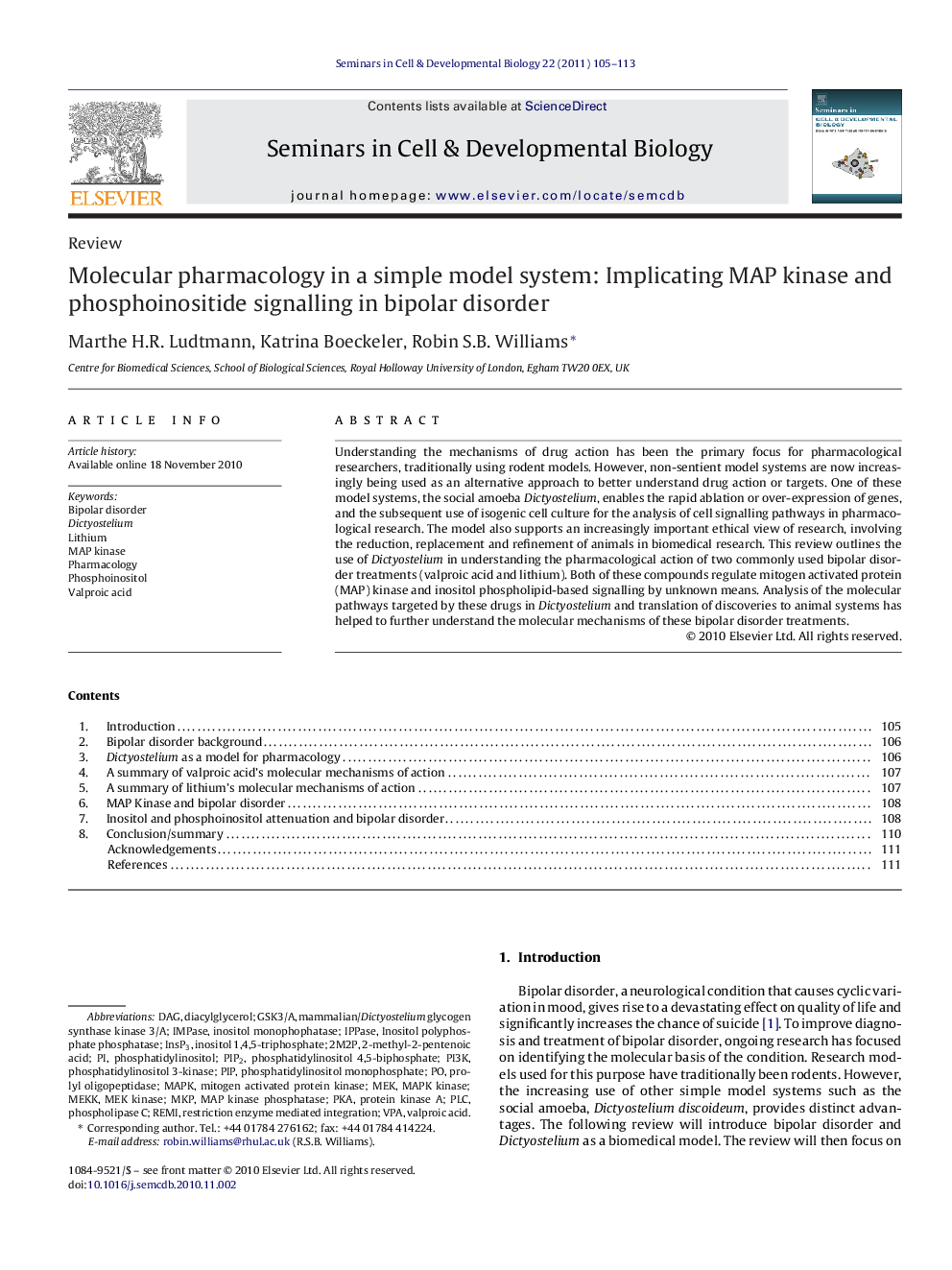| Article ID | Journal | Published Year | Pages | File Type |
|---|---|---|---|---|
| 10959216 | Seminars in Cell & Developmental Biology | 2011 | 9 Pages |
Abstract
Understanding the mechanisms of drug action has been the primary focus for pharmacological researchers, traditionally using rodent models. However, non-sentient model systems are now increasingly being used as an alternative approach to better understand drug action or targets. One of these model systems, the social amoeba Dictyostelium, enables the rapid ablation or over-expression of genes, and the subsequent use of isogenic cell culture for the analysis of cell signalling pathways in pharmacological research. The model also supports an increasingly important ethical view of research, involving the reduction, replacement and refinement of animals in biomedical research. This review outlines the use of Dictyostelium in understanding the pharmacological action of two commonly used bipolar disorder treatments (valproic acid and lithium). Both of these compounds regulate mitogen activated protein (MAP) kinase and inositol phospholipid-based signalling by unknown means. Analysis of the molecular pathways targeted by these drugs in Dictyostelium and translation of discoveries to animal systems has helped to further understand the molecular mechanisms of these bipolar disorder treatments.
Related Topics
Life Sciences
Biochemistry, Genetics and Molecular Biology
Cell Biology
Authors
Marthe H.R. Ludtmann, Katrina Boeckeler, Robin S.B. Williams,
